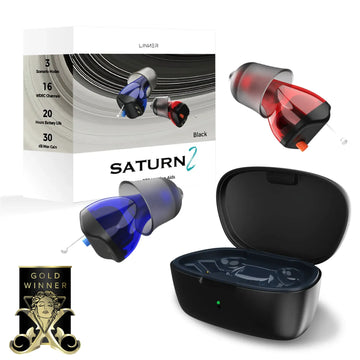Auricular acupuncture is a fascinating and specialized form of acupuncture that targets the ear as a microcosm of the entire body. Combining the wisdom of traditional Chinese medicine with modern insights from neuroscience, this technique involves the insertion of tiny, sterile needles at specific spots on the outer ear. The goal? To enhance both physical and emotional well-being.
Think of the ear as a map, where each point corresponds to different areas or systems in the body. Stimulating these points through auricular acupuncture helps to regulate the nervous system, alleviate pain, and restore balance. Common conditions it addresses include stress, anxiety, insomnia, chronic pain, addiction, and even digestive issues.
The process itself is typically gentle and brief, with minimal discomfort. In some cases, very small ear seeds or beads are used in place of needles, providing continuous stimulation between visits.
At Copper Wellness, auricular acupuncture is an essential part of our holistic approach to health and wellness. Learn more about how this technique integrates into our services https://copper-wellness.com/services/auricular-acupuncture/.
Whether practiced alone or combined with full-body acupuncture, auricular acupuncture provides swift relief and profound relaxation. It's a powerful yet subtle tool for those seeking stress relief or addressing specific health concerns.
The Intricate Connection Between Ear Points and the Nervous System
Auricular acupuncture works by stimulating specific ear points linked to the nervous system. The outer ear is teeming with nerve endings that are directly connected to the brain via several key pathways, including the vagus, trigeminal, and facial nerves. When targeted ear points are activated, they send signals to the brain that help regulate both physical and emotional responses.
One of the main pathways involved is the vagus nerve, which is crucial in calming the body’s stress response. By stimulating ear points along this nerve, auricular acupuncture can help slow heart rate, reduce blood pressure, and promote relaxation. This explains why auricular acupuncture is commonly used for anxiety, insomnia, and other stress-related issues. If anxiety and stress are something you struggle with on a regular basis, you may even qualify for a medical card, which you could use to help your mental health while you navigate the complexities of your condition. Click here https://leafyrx.org/medical-card/washington to find out more about how you could get a medical card.
Not only does it aid in emotional regulation, but it also helps manage pain. By targeting ear points that influence the brain and spinal cord, auricular acupuncture can reduce inflammation and block pain signals. This makes it particularly effective for chronic pain and muscular tension.
In essence, the ear acts as a control panel for the body. Through careful mapping, skilled practitioners can access various systems, offering a non-invasive yet highly effective way to restore balance and improve overall well-being.

When Is Auricular Acupuncture Typically Recommended?
Auricular acupuncture is frequently recommended for a wide array of conditions, especially those requiring stress relief, emotional balance, or specific pain management. Given that the ear serves as a reflection of the entire body, stimulating the right points can help regulate both mental and physical processes.
One of the most common reasons people turn to auricular acupuncture is for managing anxiety, insomnia, and emotional stress. By activating points that influence the parasympathetic nervous system, this treatment helps soothe the body and reduce overactive stress responses. It’s often included in wellness plans for those dealing with burnout, mood fluctuations, or chronic tension.
This method is also effective for pain management, especially for conditions like migraines, jaw tension, back pain, and other musculoskeletal issues. Certain ear points can reduce inflammation or block pain signals by connecting with the brain and spinal cord.
Additionally, auricular acupuncture is widely used in addiction recovery and withdrawal support. Clinics use it to help manage cravings, reduce anxiety, and ease detox symptoms, especially during smoking cessation or substance abuse recovery.
Because of its gentle, focused, and non-invasive nature, auricular acupuncture is an adaptable and accessible treatment. It fits seamlessly into both standalone treatments and integrative care plans, particularly when the goal is to calm the system and restore balance.





![Linner Mercury Clarity OTC Hearing Aids [FSA & HSA Eligible] Linner](http://www.linnerlife.com/cdn/shop/files/Linner-Mercury-Clarity-OTC-Hearing-Aids-_FSA-_-HSA-Eligible_-Linner-110038953.webp?v=1725853434&width=360)

